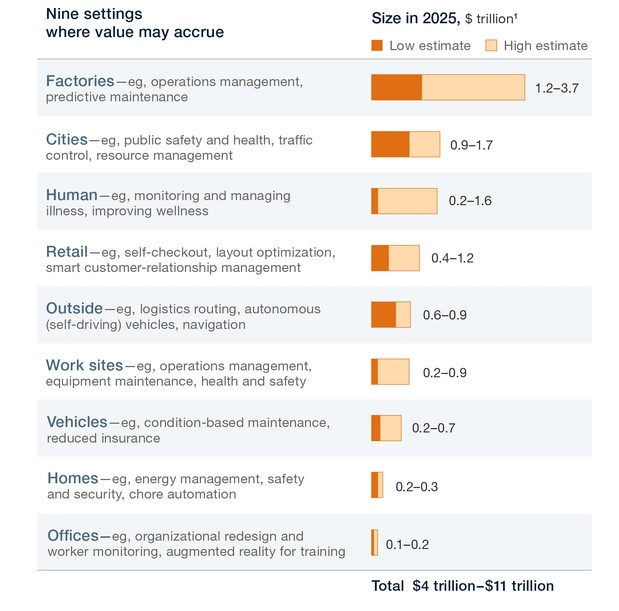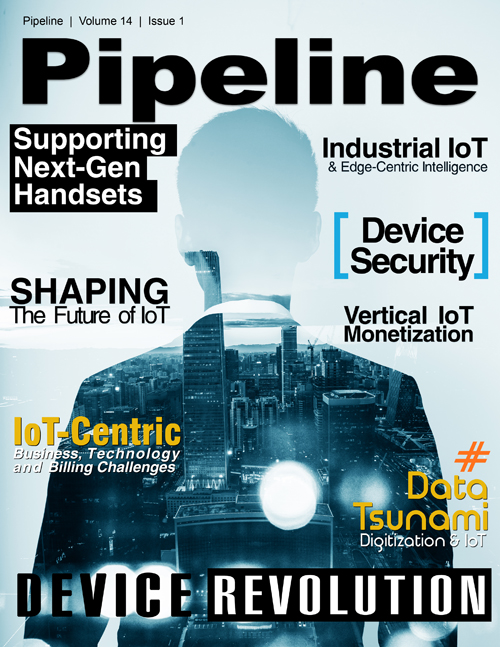Industrial IoT Demands 'Platforms' and Intelligence at 'the Edge'
By: Susana Schwartz

Industrial IoT will increase production and inspire new business models with intelligence-driven innovation, but operators must first invest in IoT “platforms” and in moving intelligence to the edge of the network so they can fully monetize the performance and latency advantages of smart industrial applications.
The Industrial Internet refers to the combination of Big Data analytics with the IoT. Industrial IoT will affect nearly two-thirds of GDP, and revolutionize how humans, machines, sensors, actuators, devices, objects and “things” interact. Already, 8.4 billion things are connected worldwide, 3.1 billion of which are being used by business and industry, according to Cisco estimates.
The total potential economic impact for IoT will amount to $3.9 trillion to $11.1 trillion a year by 2025, representing about 11 percent of the world economy, according to research by the McKinsey Global Institute (see Figure 1).

Figure 1: The IoT offers potential economic impact of $4 trillion to $11 trillion/year.
Source and courtesy of McKinsey
The beauty of industrial IoT is that it is vast and expansive enough that no one company can dominate; innovation comes from the collaboration and complementary expertise shared among many stakeholders. First movers in key industries are working rigorously to build IoT ecosystems in which value chain partners can bring to the table once-competitive capabilities that now must become complementary. In interconnecting “all” everyday and industrial “things” in a programmable and intelligent way, the IoT becomes an accelerating agent of digital transformation for many companies across all verticals.
For example, in connected agriculture, interconnections are being forged among farm equipment, fertilizer and seed companies, weather services, as well as the suppliers of IT, telecom, sensors, analytics and other products and services. Connected agriculture will grow to $3.06 billion (USD) by 2021, at a CAGR of 17.9 percent, according to MarketsandMarkets research. That market spans network management, smart water management, device management, application enablement for farm planning and management, and agricultural finance. It is a lot to cover, and John Deere, Monsanto and other giants are evaluating how these elements of precision agriculture can accommodate the 70 percent increase in food production needed by 2050 to accommodate population growth.



















